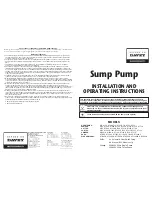
18-BB41D1-1A-EN
11
Figure 4. Converting Horizontal to Down Airflow
Lifting and Rigging
W
WA
AR
RN
NIIN
NG
G
IIM
MP
PR
RO
OP
PE
ER
R U
UN
NIIT
T L
LIIF
FT
T!!
F
Fa
aiillu
urre
e tto
o p
prro
op
pe
errlly
y lliifftt u
un
niitt cco
ou
ulld
d rre
essu
ulltt iin
n d
de
ea
atth
h o
orr
sse
erriio
ou
uss iin
njju
urry
y o
orr p
po
ossssiib
blle
e e
eq
qu
uiip
pm
me
en
ntt o
orr p
prro
op
pe
errtty
y--
o
on
nlly
y d
da
am
ma
ag
ge
e..
T
Te
esstt lliifftt u
un
niitt a
ap
pp
prro
ox
xiim
ma
atte
elly
y 2
24
4 iin
ncch
he
ess tto
o v
ve
erriiffy
y
p
prro
op
pe
err cce
en
ntte
err o
off g
grra
av
viitty
y lliifftt p
po
oiin
ntt.. T
To
o a
av
vo
oiid
d
d
drro
op
pp
piin
ng
g o
off u
un
niitt,, rre
ep
po
ossiittiio
on
n lliiffttiin
ng
g p
po
oiin
ntt iiff u
un
niitt iiss
n
no
ott lle
ev
ve
ell..
IIm
mp
po
orrtta
an
ntt:: Do not lift the unit without test lifting for
balance and rigging. Do not lift the unit in
windy conditions or above personnel. Do
not lift the unit by attaching clevis, hooks,
pins, or bolts to the unit casing, casing
hardware, corner lugs, angles, tabs, or
flanges. Failure to observe these warnings
may result in equipment damage.
1. Before preparing the unit for lifting, check the unit
dimension drawings for center of gravity for lifting
safety (
“Determine Unit Clearances,” p. 7
). Because
of placement of internal components, the unit’s
weight may be unevenly distributed. Approximate
unit weights are also provided in the unit drawings.
N
No
otte
e:: Unit rigging and hoisting requires accessory
kit BAYLIFT002BA. It includes a kit of four (4)
lifting lugs.
2. Insert the four lifting lugs in the openings provided
in the drip lip on each end of the unit. A tap or jerk
to the lug will overcome the interference that arises
due to the dimple on the lug.
3. When hoisting the unit, be sure that a proper
method of rigging is used. Use slings and spreader
bars for protection during lifting. Always test-lift the
unit to determine the exact unit balance and
stability before hoisting it to the installation
location.
4. When the curb and air ducts have been properly
installed, the unit is ready to be hoisted to the roof
and set in position.
IIm
mp
po
orrtta
an
ntt::
•
To prevent damage to the sides and
top of the unit when hoisting use
“spreader bars”.
•
The unit must be lowered into
position. The P.V.C. rubber tape on
the curb flange permits the unit to
be repositioned if required without
destroying the P.V.C. rubber seals
affixed to the mounting curb.
P
Plla
acciin
ng
g tth
he
e U
Un
niitt o
on
n tth
he
e M
Mo
ou
un
nttiin
ng
g C
Cu
urrb
b
1. The unit is designed with a perimeter drip lip that is
lower than the unit base pan, see
.
2. Position the unit drip lip down over and in contact
with the outside corner of the curb.. Continue to
lower the unit on top of the curb, with the unit drip
lip astraddle, and in contact with, both the end and
side rail of the curb. The unit should now rest on
top of the curb. Use the extreme mounting kit,
BAYEXMK001A, to add additional hold down
strength to the mounting.
N
No
otte
e:: The ductwork is installed as part of the curb
installation. Do not attach ductwork to the unit
and lower the unit with ductwork onto the curb.












































